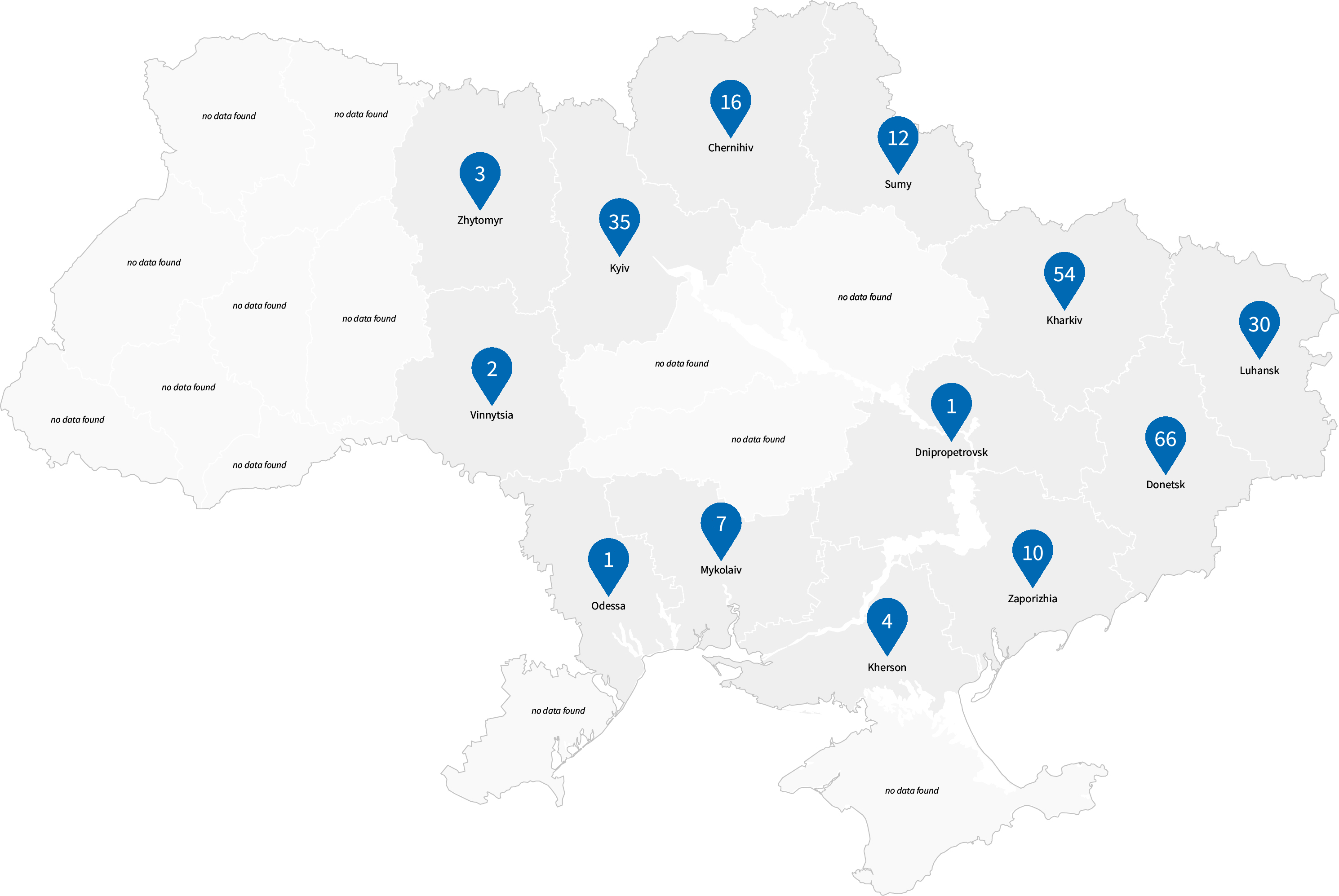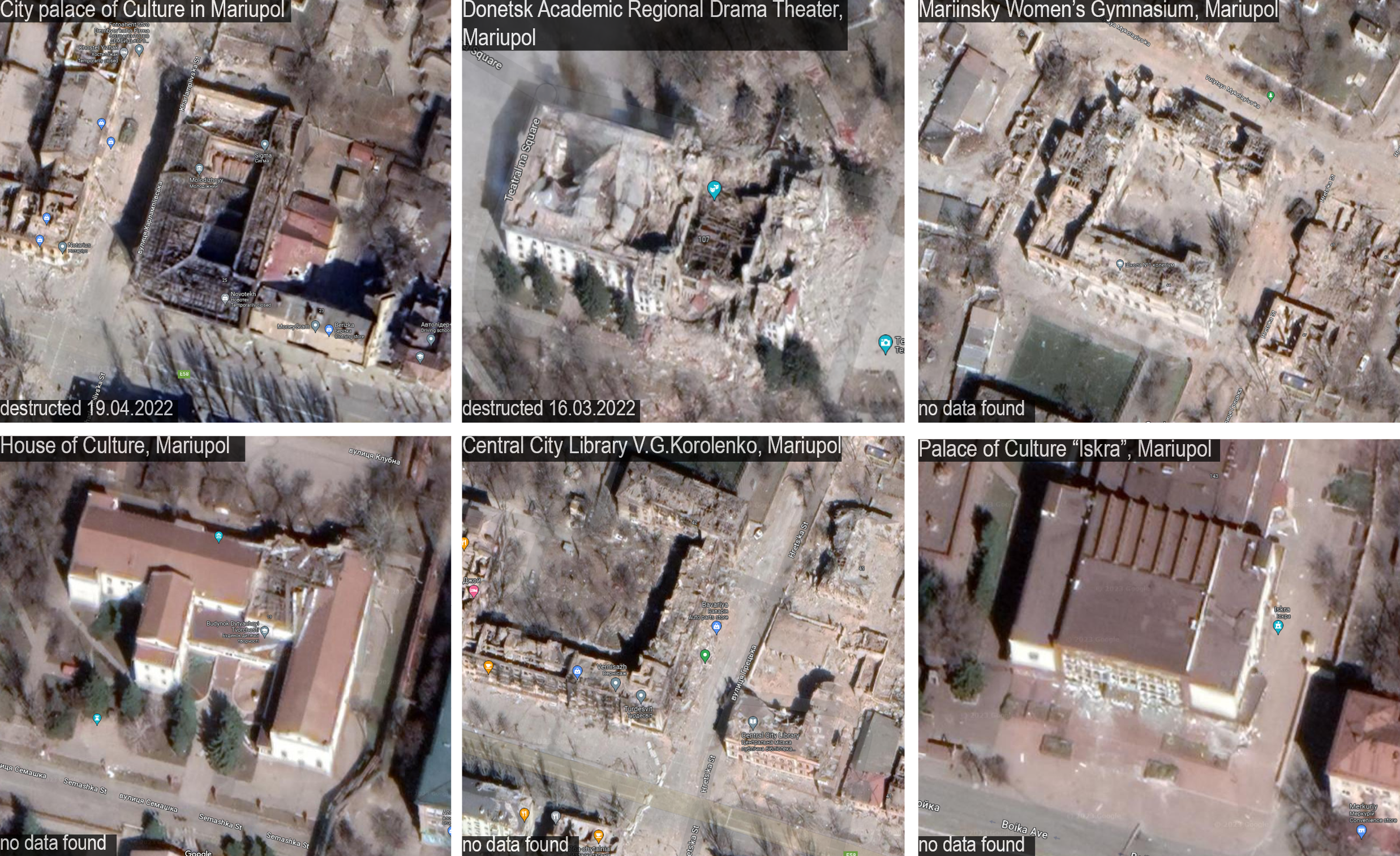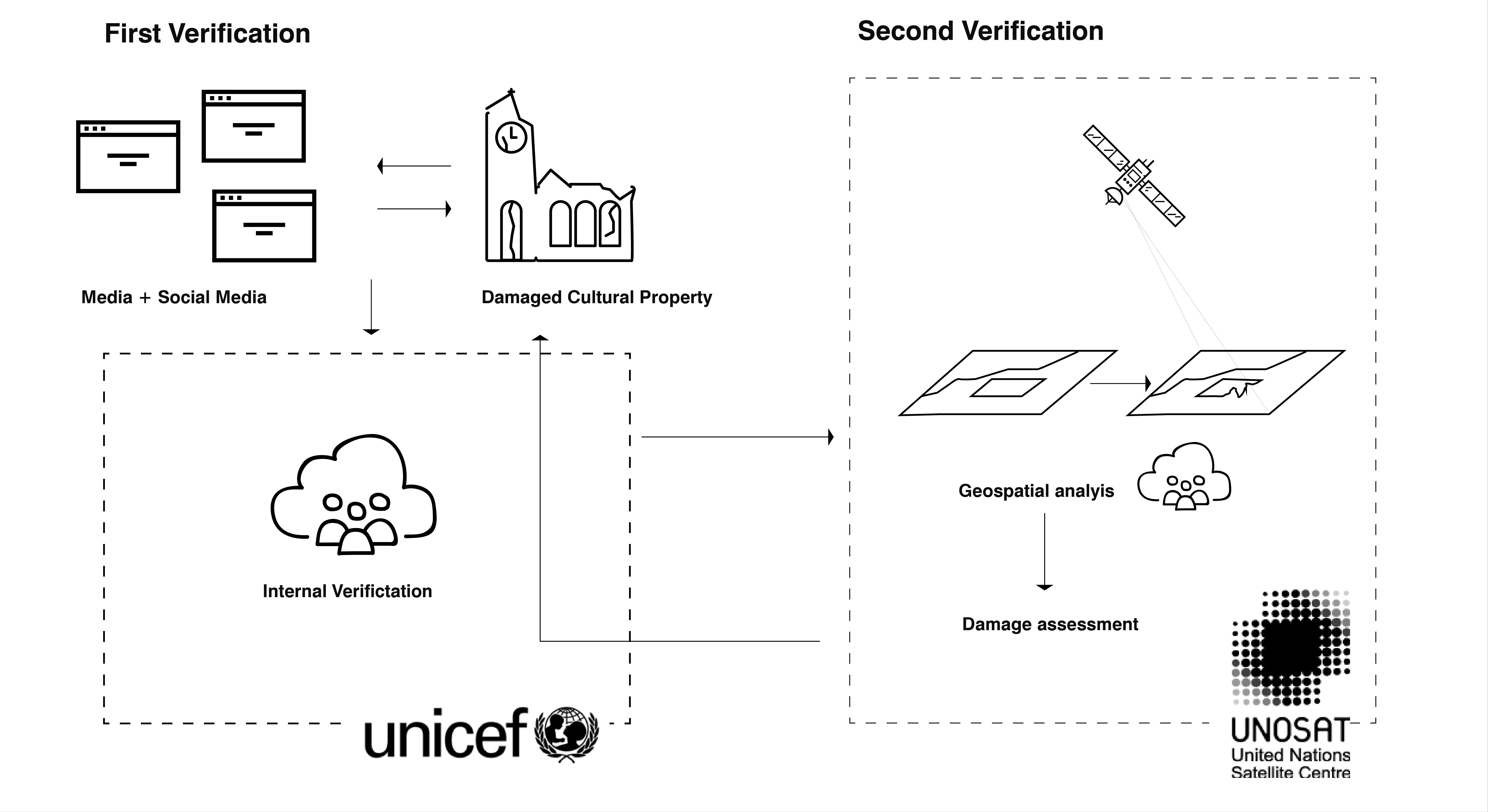The Destruction of Ukrainian Cultural Heritage
Investigation
With Ukraine at the forefront of the international geopolitical discourse, our team has committed to investigate the continued conflict, examining more closely on how the Russian invasion has systematically targeted Ukrainian history, culture and identity.
It has meticulously destroyed hundreds of Ukrainian cultural heritage sites - to its museums, monuments, places of religious and spiritual worship, libraries, and buildings of historical and/or artistic interest. These cultural artifacts - manifested through art, literature, music, dance, religion, and other forms - archive a people’s beliefs, customs, mythology, knowledge, traditions, and perspectives on the past, present, and future. As Robert Behavn said in his book, The Destruction of Memory, “every nation legitimizes its existence through its creativity - when evidence of this creativity is suppressed, piece by piece, the very identity of a nation is gradually lost.” The continual destruction of Ukraine is a colonialist strategy embraced by Russian President Vladimir Putin who has vehemently denied Ukraine’s legitimacy as a sovereign nation, even stating that a distinct Ukrainian history, language and culture “do not exist”. Our project aims to validate Ukrainian culture and communicate the narrative of how it is being fought on the front lines of the brutal war through forensic and visual investigative work.

Overview of verified destructed heritage on 2023-03-03

Satellite Imagery of Destruction around Mariupol extracted from Google Maps on 2023-30-04
Hague Convention for the Protection of Cultural Property in the Event of Armed Conflict
Directed attacks on cultural heritage sites – whether it’s collateral damage to the exigencies of war or deliberate acts - is deeply rooted in world’s history. Patterns of the targeted destruction of cultural properties highlights the particular vulnerable position these sites are often placed under in times of war. The pain and loss that is inflicted upon humankind in armed conflict, nonetheless, will always take precedence over the preservation of cultural property, but growing sentiments within the international community during the twentieth century signaled an increased desire to safeguard these sites through the enactment of international laws and policy. And despite attempts by organizations and local governments to mitigate these effects with the implementation of treaties calling for their protection, the destruction and loss of properties of cultural significance remains a pervasive feature of war. These responsibilities led to the establishment of the 1954 Hague Convention for the Protection of Cultural Property in the Event of Armed Conflict.
The 1954 Hague Convention defines ‘cultural property’ in Article 1 as:
- movable or immovable property of great importance to the cultural heritage of every people, such as monuments of architecture, art or history, whether religious or secular; archaeological sites; groups of buildings which, as a whole, are of historical or artistic interest; works of art; manuscripts, books and other objects of artistic, historical or archaeological interest; as well as scientific collections and important collections of books or archives or of reproductions of the property defined above;
- buildings whose main and effective purpose is to preserve or exhibit the movable cultural property defined in sub-paragraph (a) such as museums, large libraries and depositories of archives, and refuges intended to shelter, in the event of armed conflict, the movable cultural property defined in sub-paragraph (a);
- centers containing a large amount of cultural propertyas defined in the sub-paragraphs (a) and (b), to be known as ‘centers containing monuments’
Embedded within the multilateral treaty are strategies on the marking and protection of cultural properties with a distinctive emblem in “the form of a shield, pointed below, persaltire blue and white (a shield consisting of a royal-blue square, one of the angles of which forms the point of the shield, and of a royal-blue triangle above the square, the space on either side being taken up by a white triangle).”

Emblem of UNESCO and the Blue Shield
Implemented as an advisory board to UNESCO, Blue Shield International,often referred to as the cultural equivalent of the Red Cross is a universal network that aims to safeguard properties of cultural heritage worthy of special protection in the event of armed conflict. The cultural emblem [delineated in the Hague Convention] prominently marked at these cultural monuments were enacted as part of a number of international legal initiatives to prevent any damage, but their identification has enabled combatants to more readily identify and target these sites.
Methodology
As the Russian-Ukrainian war enters into its second year, UNESCO has verified damage to over 250 sites with cultural significance in Ukraine, but some researchers estimate the damage could surpass 1,600. Much of the destruction has been inflicted on religious and sacred places, [representing over 50% of the confirmed cases] but has extended to libraries, museums, monuments, and theaters. The original dataset published by UNESCO provided the groundwork of our research. Building upon their preliminary damage assessment using comparative methods of satellite imagery and photographs and videos from social media, we added the following attributes:
| Site Name | Region | Address | City | Latitude | Longitude | Typology |
| Date of Construction | Date of Destruction | Weapon Used | Website | Sources |
Suplemented Data Set
Download the full dataset here.
Since the start of the Russian invasion of Ukraine, UNESCO has been conducting damage assessments for ‘cultural properties’ by cross-checking the reported incidents with geospatial analysis provided by UNOSAT. Organizations and/or local governments can request reports from UNOSAT to assess damage. In 2022, the emergency mapping service was activated 72 times.

Diagram of the Verification Process according to UNESCO

Perspective
This project aims to respectfully archive these places of memory through the collection of evidence and documentation surrounding the extent of damage inflicted on these cultural monuments.This dataset has been compiled for the intention of the public’s participation towards augmenting, gathering and investigating continual cultural destruction occurring in Ukraine.
For any questions, please contact:
- mkb2192@columbia.edu
- vk2498@columbia.edu
- nk2912@columbia.edu
Bibliography
- Beven, Robert, “The Destruction of Memory”, 2016, p 131
- Farago, Jason, et al. “A Culture in the Cross Hairs.” The New York Times, The New York Times, 20 Dec. 2022, https://www.nytimes.com/interactive/2022/12/19/arts/design/ukraine-cultural-heritage-war-impacts.html
- “Postcards from Ukraine.” Ukrainian Institute, https://ui.org.ua/en/postcards-en/.
- The Blue Shield.org, , accessed 28 March 2023,https://theblueshield.org/defining-cultural-heritage-and-cultural-property/
Datasets
- UNESCO, Damaged Cultural Sites in Ukraine Verified by UNESCO, The United Nations Educational, Scientific and Cultural Organization , 22 February 2023. https://www.unesco.org/en/articles/damaged-cultural-sites-ukraine-verified-unesco
- Google Satellite, URL:http://mt0.google.com/vt/lyrs=s&hl=en&x={x}&y={y}&z={z}; 2019